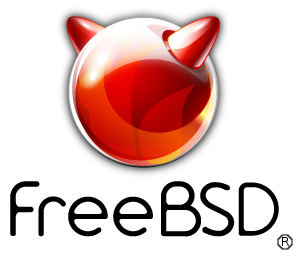FreeBSD is a powerful, Unix-like operating system known for its performance, security, and versatility. Whether you’re setting up a virtual server, deploying an embedded platform, or experimenting with OS features, FreeBSD OS stands out as a flexible and dependable option. This comprehensive guide walks you through everything from FreeBSD install steps to downloading the right version for your system, including insights on FreeBSD vs Linux.

🌐 What is FreeBSD OS?
FreeBSD is a free and open-source operační systém derived from BSD (Berkeley Software Distribution), which originated at the University of California, Berkeley. It’s used widely for powering high-performance web servers, firewalls, and even core components of the internet infrastructure.
- Over 30 years of development
- Highly stable and secure
- Ideal for servers, desktopsa embedded systems
- Supported by a global volunteer-driven community
🌟 Why Choose FreeBSD Over Linux?
Na stránkách FreeBSD vs Linux debate is ongoing in the open-source community. While both systems are similar in structure, they have significant differences:
| 🌟 Feature | 🐚 FreeBSD | 🐧 Linux |
|---|---|---|
| 📝 Licensing | BSD License (✅ more permissive) | GNU GPL (🔒 copyleft) |
| 🔧 Kernel & Userland | Developed together by one team 🤝 | Developed separately 🧩 |
| 🔐 Security Features | Advanced jail system, IPFW, PF, DTrace 🔍 | SELinux, AppArmor 🛡️ |
| 📦 Ports/Package System | 23,000+ ports via Ports Collection 📚 | Various package managers like APT, YUM 📁 |
| 🧱 Stability | High consistency in enterprise 🏢 | Rapid updates, occasionally unstable 🔄 |
🚀 Key Features of FreeBSD OS
Here are the standout features that make FreeBSD OS an industry favorite:
⚡ Firewalls
- Built-in support for IPFW, IPFilter, and a custom version of pf
- Simulate real-world network problems (latency, jitter, packet loss)
🛎 Jails (Lightweight Virtualization)
- Isolate processes in unique namespaces
- Allow jails within jails for layered security
🌐 Linux Emulation
- Run unmodified Linux binaries with system call translation
📊 DTrace
- Real-time performance tracing for applications and kernel
📚 Ports Collection
- Access to 23,000+ third-party apps
- Customize compile-time options
🔹 Network Virtualization (VImage)
- Create virtualized networking stacks
- Used with jail(8) to simulate full network environments
📄 FreeBSD System Requirements
Make sure your system meets the following before beginning the FreeBSD install process:
| 🧩 Component | ⚙️ Minimum Requirement |
|---|---|
| 💾 RAM | 96 MB |
| 💽 Hard Drive Space | 1.5 GB of free space |
| 🖥️ Processor | x86 (32-bit) or x86_64 (64-bit) |
For optimal performance, aim for at least 512 MB RAM and 20 GB storage.
📚 Also Read: FreeNAS Operating System
🪄 How to Install FreeBSD (Step-by-Step)
✅ 1. Download FreeBSD ISO
Choose your preferred version: 64-bit, 32-bit, or for VirtualBox.
🚪 2. Create Bootable Media
Use tools like Rufus (Windows) or Etcher (Mac/Linux) to burn the ISO to a USB stick.
🎓 3. Boot and Begin Installation
Insert the USB or mount ISO in VirtualBox and boot from it.
🤞 4. Follow Guided Installer
Partition disk, select components, and complete network configuration.
📆 5. Post-Install Configuration
Set up your user, install packages from Ports Collection, and secure your system.
🔄 Popular Alternatives to FreeBSD
If you want to explore other OS options, here are some solid alternatives:
- Ubuntu – Popular for desktops and cloud
- Debian – Rock-solid, parent of Ubuntu
- Linux Mint – User-friendly Linux distro
- Arch Linux – For advanced users
- Manjaro – Arch-based, easier to install
- Fedora – Red Hat-supported cutting-edge distro
💾 Technical Specifications
| 📌 Software Name | FreeBSD |
|---|---|
| 🆚 Verze | 13.0 (Latest Stable) |
| 📦 Velikost souboru | 327 MB ISO |
| 🗣️ Language | Angličtina |
| 📝 Licence | Free BSD License |
| 👨💻 Vývojář | The FreeBSD Project |
Stay tuned for FreeBSD 15, which promises more cutting-edge capabilities.
📦 FreeBSD Download Options
Here’s how to get the right version of FreeBSD for your specific use case:
| 📥 Download Type | 📝 Description |
|---|---|
| 💿 FreeBSD download ISO | Bootable image for clean installations 🧼 |
| 🖥️ FreeBSD OS download 64 bit | ISO image tailored for 64-bit (amd64) architectures ⚙️ |
| 💻 FreeBSD OS download 32 bit | ISO image for legacy 32-bit (i386) systems 🧓 |
| 📀 FreeBSD ISO for VirtualBox | Preconfigured or bootable ISO for use in VirtualBox environments 🧪 |
| 📦 FreeBSD 12 download | Stable legacy release still supported ✅ |
| 🚀 FreeBSD 15 | Upcoming version with experimental features 🧬 |
Official FreeBSD Download Page: https://www.freebsd.org/where/
❓ Často kladené otázky (FAQ)
1. Is FreeBSD free to use?
Yes, FreeBSD OS is entirely free and open-source under the BSD license.
2. What is the difference between FreeBSD and Linux?
While both are Unix-like, FreeBSD is more integrated with kernel and userland consistency. It also features different licensing and a unique security model using jails.
3. Can I use FreeBSD for desktop computing?
Absolutely. While traditionally used on servers, FreeBSD can be a powerful and secure desktop OS with some configuration.
4. Can I run FreeBSD in VirtualBox?
Yes. Download the FreeBSD ISO for VirtualBox, mount it, and follow the installation instructions. It runs smoothly in virtualized environments.
5. Does FreeBSD support 32-bit systems?
Yes. You can get the FreeBSD OS download 32 bit ISO from the official site.
🏆 Conclusion: Why You Should Try FreeBSD
FreeBSD is a mature, versatile, and secure operating system that offers significant advantages for developers, system administrators, and tech enthusiasts. Whether you need a reliable OS for servers or want to explore advanced OS concepts like jails a DTrace, FreeBSD download options make it accessible to everyone.
Thanks to its flexibility, robust features, and long-standing community support, FreeBSD OS remains a relevant and powerful choice in the evolving tech landscape.